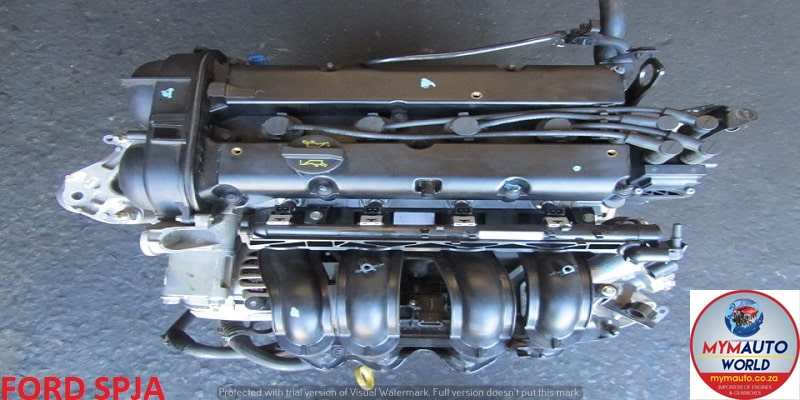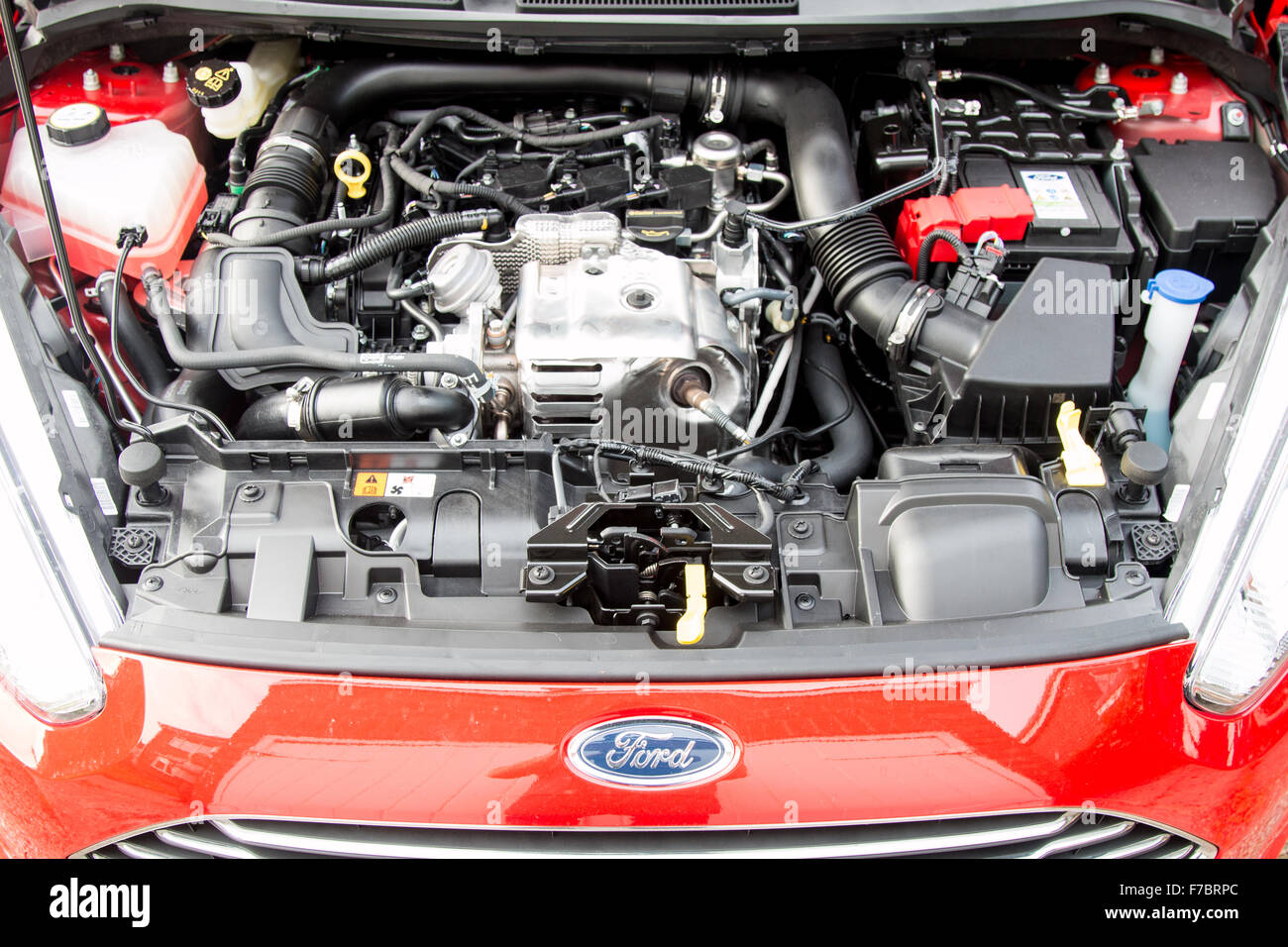The Role of a Quality Ford Fiesta Engine in Vehicle Performance
Wiki Article
The Future of Engines: Technologies Driving Sustainable Power Solutions
As the automobile sector browses the vital change in the direction of sustainability, the future of engines is progressively defined by groundbreaking technologies. Electric engine advancements, along with appealing advancements in hydrogen gas cells and biofuels, are reshaping the landscape of power solutions. The emergence of crossbreed systems further complicates this advancement, offering both obstacles and chances to decrease exhausts successfully. Coupled with the combination of man-made intelligence in engine layout, these technical strides increase vital inquiries regarding their long-lasting viability and effect on standard standards. What might this imply for the market and customers alike?Electric Engine Dope
The advancement of electric engine developments symbolizes a pivotal shift in the automobile and aerospace sectors, driven by the urgent demand for sustainable options to fossil gas. This transition is characterized by significant improvements in battery innovation, power electronics, and electric motor design, which collectively enhance the performance and performance of electric engines.Current advancements have actually caused the creation of lighter, more energy-dense batteries, such as lithium-silicon and solid-state batteries, which promise longer varieties and much shorter charging times. Furthermore, improvements in electric motor efficiency, such as the use of long-term magnets and progressed cooling systems, enable electrical engines to run successfully under varying problems. These enhancements not only improve car efficiency however likewise add to a reduction in general energy usage.
In addition, the integration of advanced software formulas has actually maximized power administration in electric lorries, permitting regenerative stopping and predictive charging strategies. As manufacturers progressively welcome electric propulsion, the vehicle and aerospace fields are witnessing a paradigm change in the direction of greener innovations. This evolution not just meets governing needs however likewise aligns with consumer preferences for ecologically friendly transportation services, strengthening electrical engines as a cornerstone of future sustainable movement.
Innovations in Biofuels
As the aerospace and automotive sectors progressively focus on sustainable power sources, advancements in biofuels arise as a corresponding option to electric engines. Biofuels, acquired from organic products such as crops, waste, and algae, provide an innovative avenue for reducing greenhouse gas emissions and reliance on nonrenewable fuel sources.Current research has concentrated on enhancing the effectiveness and sustainability of biofuel manufacturing. Second-generation biofuels utilize non-food feedstocks, reducing competition with food supply and minimizing ecological influence. Furthermore, innovations in artificial biology have actually made it possible for the design of microbes to produce biofuels a lot more properly, causing greater yields and reduced production prices.
Furthermore, the growth of drop-in biofuels allows for smooth assimilation right into existing facilities, making it possible for a smoother shift for sectors generally reliant on fossil fuels. ford fiesta engine. These fuels can be utilized in existing engines without alterations, promoting their adoption across different fields
Investments in biofuel modern technology, together with helpful plans, are necessary to drive technology and scalability. As the global area looks for to combat environment modification, biofuels supply a pragmatic, instant service that aligns with the overarching goal of sustainability in transportation and air travel.
Hydrogen Gas Cell Technology
An expanding number of scientists and companies are discovering hydrogen fuel cell technology as a viable alternative to traditional source of power in transportation and power systems. This modern technology transforms chemical energy from hydrogen into electrical energy through an electrochemical reaction, with water as the only by-product, making it an eco-friendly choice.The core of hydrogen gas cells is the fuel cell stack, where hydrogen molecules are split into electrons and protons. The circulation of electrons produces electrical power, while protons relocate via a membrane to incorporate with oxygen from the air, developing water. This process leads to high efficiency and low emissions, placing hydrogen gas cells as a crucial gamer in the change to lasting power.
Considerable improvements have been made in boosting the durability and efficiency of fuel cells, together with lowering prices through innovative production methods. The advancement of hydrogen manufacturing techniques, such as electrolysis powered by sustainable power sources, boosts the sustainability of the overall system. As infrastructure for hydrogen refueling expands and manufacturing methods become extra reliable, hydrogen gas cell technology holds great pledge for decarbonizing numerous markets, including heavy-duty transportation and stationary power generation.
Crossbreed Equipments and Their Influence
Hybrid systems represent a significant evolution in sustainable engine modern technology, merging typical interior combustion engines with electrical propulsion to maximize power performance and reduce discharges (ford fiesta engine). This double method enables lorries to utilize both power resources, enabling higher flexibility in power usage and decreasing reliance on fossil gas

Along with environmental benefits, crossbreed systems supply consumers a viable change in the direction of completely electric vehicles. They ease array anxiety by integrating the comfort of gasoline with the advantages of electric propulsion, making them an eye-catching choice for a broader target market. As makers spend in hybrid innovation, the development of more find advanced battery systems and light-weight materials proceeds to boost efficiency. Generally, hybrid systems represent a crucial step towards accomplishing lasting transportation and attending to the urgent need for eco-friendly power Read Full Article services.
The Role of AI in Engine Design
Leveraging advanced formulas and artificial intelligence methods, the vehicle sector is increasingly integrating expert system (AI) into engine layout procedures. AI enhances the performance and performance of design by analyzing huge datasets to determine optimum arrangements and efficiency criteria. This capacity allows engineers to simulate various operating problems and forecast engine habits under numerous scenarios, considerably reducing the moment and expense related to conventional prototyping techniques.In addition, AI promotes the development of advanced products and combustion processes customized for sustainability. By optimizing gas effectiveness and minimizing discharges, AI-driven styles align with international efforts aimed at lowering the carbon impact of vehicle engines. Device understanding algorithms can likewise predict maintenance requirements, resulting in improved reliability and long life of engine elements.
In Addition, AI is important in the integration of electrification modern technologies, such as hybrid systems, where it can optimize battery management and power healing procedures. As the market relocates in the direction of even more sustainable power remedies, the role of AI in engine design comes to be progressively essential, driving innovation and improving the performance of future engines. Eventually, the cooperation between AI and engine design advertises a brand-new period of smarter, cleaner, and much more effective automotive modern technologies.

Conclusion
To conclude, the his explanation future of engines is being formed by a convergence of cutting-edge modern technologies that focus on sustainability. Electric engine developments, biofuel advancements, hydrogen fuel cells, and hybrid systems collectively add to a considerable reduction in exhausts and environmental impact. In addition, the assimilation of artificial intelligence in engine design boosts performance and performance. These transformative services underscore a commitment to creating a cleaner, a lot more lasting vehicle landscape, eventually benefiting both culture and the setting.Electric engine advancements, along with appealing developments in hydrogen gas cells and biofuels, are reshaping the landscape of power options. In addition, enhancements in electrical motor efficiency, such as the use of irreversible magnets and advanced cooling down systems, allow electric engines to run efficiently under differing problems. By enhancing gas effectiveness and reducing exhausts, AI-driven styles straighten with global efforts intended at decreasing the carbon footprint of automobile engines. As the market relocates in the direction of more lasting power remedies, the duty of AI in engine layout comes to be significantly important, driving innovation and boosting the performance of future engines. Electric engine developments, biofuel growths, hydrogen fuel cells, and crossbreed systems collectively add to a substantial decrease in exhausts and environmental influence.
Report this wiki page